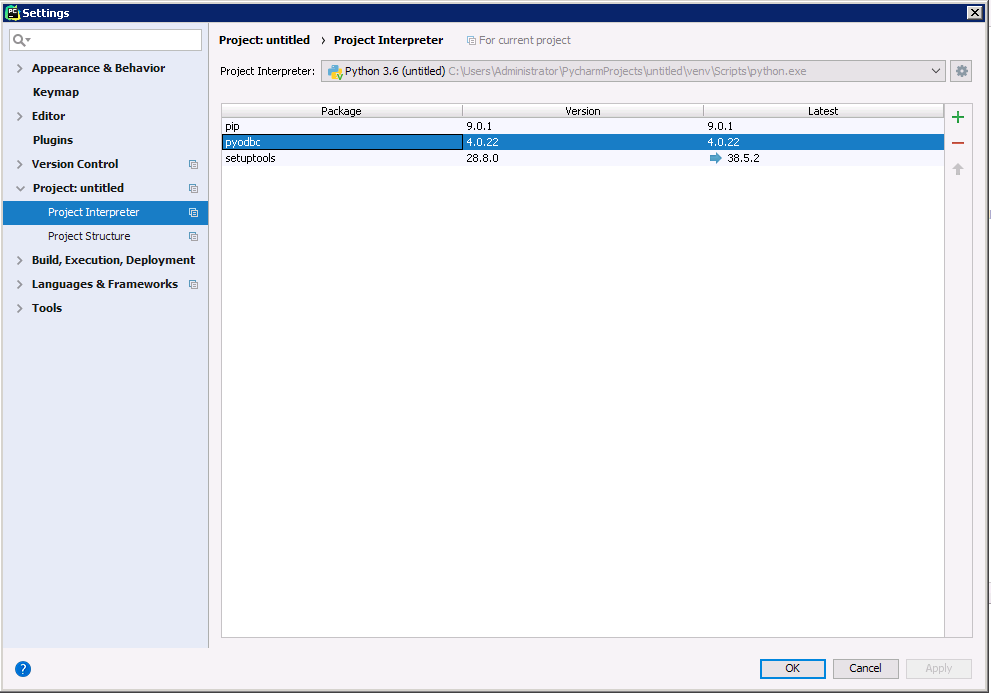Discover how a bimodal integration strategy can address the major data management challenges facing your organization today.
Get the Report →Using the CData ODBC Driver for QuickBooks Online in PyCharm
Connect to QuickBooks Online as an ODBC data source in PyCharm using the CData ODBC Driver for QuickBooks Online.
The CData ODBC Drivers can be used in any environment that supports loading an ODBC Driver. In this tutorial we will explore using the CData ODBC Driver for QuickBooks Online from within PyCharm. Included are steps for adding the CData ODBC Driver as a data source, as well as basic PyCharm code to query the data source and display results.
To begin, this tutorial will assume that you have already installed the CData ODBC Driver for QuickBooks Online as well as PyCharm.
Add Pyodbc to the Project
Follow the steps below to add the pyodbc module to your project.
- Click File -> Settings to open the project settings window.
- Click Project Interpreter from the Project: YourProjectName menu.
- To add pyodbc, click the + button and enter pyodbc.
- Click Install Package to install pyodbc.

Connect to QuickBooks Online
You can now connect with an ODBC connection string or a DSN. See the Getting Started section in the CData driver documentation for a guide to creating a DSN on your OS.
QuickBooks Online uses the OAuth authentication standard. OAuth requires the authenticating user to log in through the browser. To authenticate using OAuth, you can use the embedded OAuthClientId, OAuthClientSecret, and CallbackURL or you can obtain your own by registering an app with Intuit. Additionally, if you want to connect to sandbox data, set UseSandbox to true.
See the Getting Started chapter of the help documentation for a guide to using OAuth.
Below is the syntax for a DSN:
[CData QuickBooksOnline Source]
Driver = CData ODBC Driver for QuickBooks Online
Description = My Description
Execute SQL to QuickBooks Online
Instantiate a Cursor and use the execute method of the Cursor class to execute any SQL statement.
import pyodbc
cnxn = pyodbc.connect('DRIVER={CData ODBC Driver for QuickBooksOnline};')
cursor = cnxn.cursor()
cursor.execute("SELECT DisplayName, Balance FROM Customers WHERE FullyQualifiedName = 'Cook, Brian'")
rows = cursor.fetchall()
for row in rows:
print(row.DisplayName, row.Balance)
After connecting to QuickBooks Online in PyCharm using the CData ODBC Driver, you will be able to build Python apps with access to QuickBooks Online data as if it were a standard database. If you have any questions, comments, or feedback regarding this tutorial, please contact us at [email protected].






